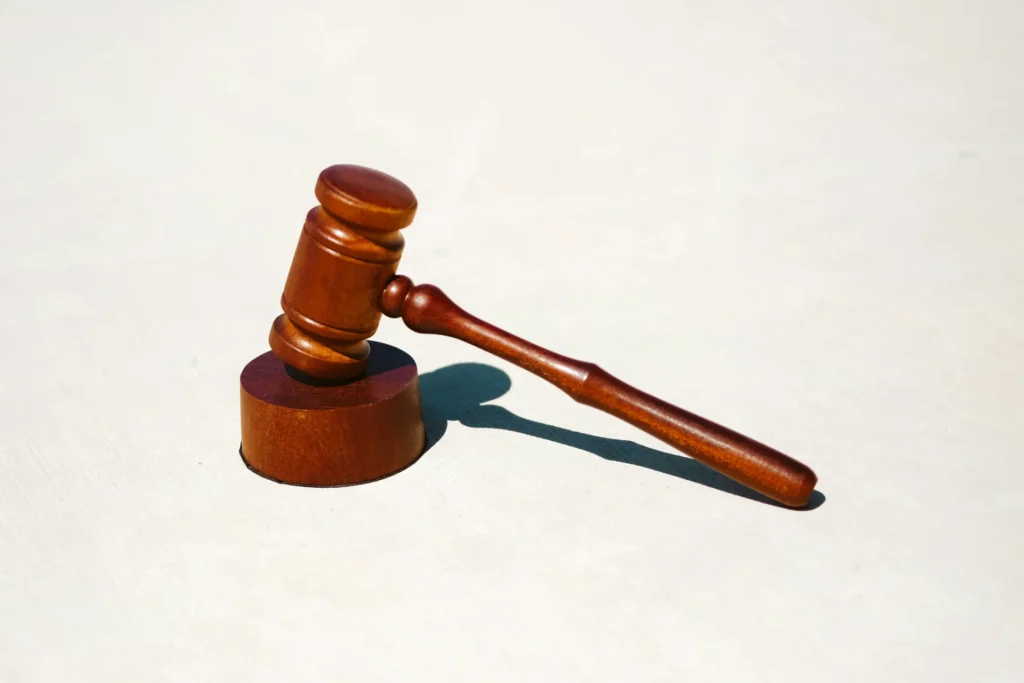There are two main types of law that are being used by the whole world. Common law and civil law. Because of some differences and similarities, most countries use them according to their systems. Let’s increase your knowledge of law that will help you to understand the similarities and differences between common law vs civil law, which countries use them accordingly, and which is better for a fair environment.
Common Law
Common Law originated in England during the medieval period. Unlike written laws, it developed from court decisions and traditions over time. Judges played a crucial role, using previous rulings to guide new decisions a practice known as precedent. About 30% of the world’s population lives in common law jurisdictions. This includes countries such as the United States, Canada, India, and the United Kingdom.
Key Features of Common Law
- Case Law Focus: Judges rely heavily on past rulings to decide current cases.
- Precedent: This principle ensures consistency and fairness by following earlier decisions.
Common Law Examples
Common law relies on decisions made by judges in previous cases. These decisions, known as precedents, help guide future rulings. Here are some important examples of common law cases, explained in simple terms:
Famous Landmark Cases
1. Donoghue v Stevenson (1932):
This case created the idea of a duty of care, which means you must avoid actions that can harm others.
What happened? A woman got sick after drinking ginger beer that had a dead snail in it.
The decision: The court said the manufacturer was responsible for ensuring their products didn’t harm people, even if there was no direct contract between them and the consumer.
2. Carlill v Carbolic Smoke Ball Co (1893):
This case clarified what makes a contract legally binding.
What happened? A company promised £100 to anyone who used their product and still got the flu. A woman followed the instructions, got sick, and claimed the reward.
The decision: The court ruled in her favor, saying the company’s advertisement was a serious offer and created a valid contract.
3. R v Dudley and Stephens (1884):
This case addressed the limits of necessity as a defense for committing a crime.
What happened? Two sailors, stranded at sea, killed and ate another crew member to survive.
The decision: The court ruled that necessity could not justify murder, even in extreme situations.
4. Marbury v Madison (1803):
While this case happened in the U.S., it had a huge impact on common law systems worldwide.
What happened? The court decided it had the power to review whether laws agreed with the Constitution.
The decision: This established the principle of judicial review, giving courts the authority to check if laws are valid.
Other Notable Cases
1. Entick v Carrington (1765):
This case reinforced the idea that everyone, including the government, must follow the law.
What happened? Government officials broke into someone’s house without permission.
The decision: The court ruled that such actions were illegal and that no one, not even the government, is above the law.
2. The Case of Proclamations (1610):
This case limited the powers of the king or queen.
What happened? The king tried to create laws without consulting Parliament.
The decision: The court said the monarchy couldn’t make laws on its own, ensuring parliamentary approval was required.
Which Countries are Common Law?
- Antigua and Barbuda
- Australia
- Bahamas
- Bangladesh
- Barbados
- Belize
- British Virgin Islands
- Canada (common law in all provinces except Quebec)
- Cyprus
- Dominica
- Fiji
- Ghana
- Grenada
- Guyana
- Hong Kong
- India
- Ireland
- Israel
- Jamaica
- Kenya
- Liberia
- Malaysia (mixed system)
- Malta
- Marshall Islands
- Micronesia
- Myanmar
- Namibia
- Nauru
- New Zealand
- Nigeria
- Pakistan
- Palau
- Papua New Guinea (mixed system)
- Philippines (mixed system)
- Sierra Leone (mixed system)
- Singapore
- South Africa (mixed system)
- Sri Lanka (mixed system)
- Trinidad and Tobago
- United Kingdom (including overseas territories)
- United States (except Louisiana, which follows a civil law system)
- Zimbabwe
Civil Law

Civil Law has its roots in ancient Roman law, where legal principles were systematically written down. This tradition evolved into the codified systems used in many countries today. These law systems account for approximately 60% of the global population nowadays.
Key Features of Civil Law
- Written Statutes: The foundation lies in comprehensive legal codes.
- Judge’s Role: Judges apply the law rather than interpret it, keeping decisions predictable and uniform.
Civil Law Examples
Civil law deals with disagreements between people, businesses, or organizations. Unlike criminal law, civil law usually involves compensation or resolving disputes instead of punishing someone. Here are some common types of civil law cases and examples to make things clear:
Types of Civil Cases
1. Tort Claims:
These cases happen when one person harms another, either physically or financially.
Example: Someone injured in a car accident sues the other driver to cover medical bills and damages.
2. Breach of Contract:
These cases arise when someone doesn’t honor their agreement in a contract.
Example: A homeowner hires a builder to make a deck, but it’s poorly built. The homeowner sues to get the deck fixed or receive compensation.
3, Landlord/Tenant Disputes:
These involve disagreements between landlords and tenants about rental agreements or property issues.
Example: A tenant sues their landlord for not fixing plumbing problems that make the house unsafe to live in.
Specific Examples of Civil Law Cases
1. Medical Malpractice:
What happened? A doctor fails to diagnose a serious illness on time, and the patient’s condition gets worse.
Example: A family sues the doctor for medical negligence, asking for compensation to cover extra medical expenses and suffering.
2. Product Liability:
What happened? A consumer is injured because a product they bought is defective.
Example: Someone sues a company after a faulty electric kettle causes burns, asking for money to cover medical bills and damages.
3. Employment Disputes:
What happened? An employee feels they were fired unfairly.
Example: A worker sues their employer for wrongful termination, claiming they were let go without a valid reason.
4. Disability Claims:
What happened? A person is denied disability benefits even though they believe they qualify.
Example: An individual appeals the denial, providing evidence to show they meet the criteria for the benefits.
5. Consumer Protection Cases:
What happened? A company misleads customers about a product.
Example: A customer sues a business for false advertising after buying a product that didn’t work as promised.
Civil law cases are about finding fair solutions to everyday problems. Whether it’s a broken contract, poor medical care, or a defective product, civil law helps people get justice when things go wrong.
Which Countries Use Civil Law?
- Andorra
- Argentina
- Armenia
- Aruba
- Austria
- Azerbaijan
- Belarus
- Belgium
- Benin
- Bolivia
- Bosnia and Herzegovina
- Brazil
- Bulgaria
- Burkina Faso
- Burundi
- Cabo Verde (Cape Verde)
- Chile
- China (People’s Republic)
- Colombia
- Costa Rica
- Côte d’Ivoire (Ivory Coast)
- Czech Republic
- Democratic Republic of the Congo
- Denmark
- Ecuador
- Egypt
- Ethiopia
- Finland
- France
- Georgia
- Germany
- Ghana (mixed system)
- Greece
- Guinea-Bissau (mixed system)
- Hungary
- Iceland
- India (mixed system)
- Indonesia (mixed system)
- Italy
- Japan
- Kazakhstan
- Kyrgyzstan
- Latvia
- Lebanon (mixed system)
- Lithuania
- Luxembourg
- Malaysia (mixed system)
- Mexico (mixed system)
- Moldova
- Monaco
- Morocco
- Nicaragua
- Nigeria (mixed system)
- Norway
- Peru
- Philippines (mixed system)
- Poland
- Portugal
- Romania
- Russia
- Rwanda (mixed system)
- Saudi Arabia (mixed system)
- Serbia
- Singapore (mixed system)
- Slovakia
- Slovenia
- South Korea
- Spain
- Sweden
- Switzerland
- Taiwan (Republic of China)
- Turkey
- Ukraine
- Uruguay
- Uzbekistan
- Venezuela
- Vietnam
Similarities Between Common Law and Civil Law
| Aspect | Common Law | Civil Law | Shared Similarity |
| Rule of Law | Laws are applied equally to everyone | Laws are applied equally to everyone. | Both ensure fairness and equality under the law. |
| Role of Judges | Judges interpret laws and set precedents. | Judges apply and interpret codified laws. | Courts play a crucial role in resolving disputes and ensuring justice. |
| Legal Framework | Built on case law and judicial decisions. | Based on detailed legal codes and statutes. | Both establish rules for behavior, rights, and dispute resolution. |
| Legislative Influence | Courts influence legislative changes. | Laws are updated by legislative amendments. | Both rely on legislative bodies to create and modify laws. |
| Legal Professionals | Lawyers represent clients and interpret laws. | Lawyers represent clients and interpret laws. | Legal practitioners are essential for navigating both systems. |
| Consistency | Precedents guide decisions to ensure fairness. | Codes aim to standardize rulings for predictability. | Both strive for consistent outcomes in similar legal situations. |
| Adaptability | Evolves through new court decisions. | Laws are amended to reflect societal changes. | Both systems adjust to modern values and norms. |

What Are the Main Differences Between Common Law and Civil Law?
Common law and civil law are two distinct legal systems that differ fundamentally in their sources of law, judicial processes, and overall structure. Here are the primary differences:
1. Source of Law
- Common Law: The primary source of law is judicial decisions and precedents established by courts. Judges interpret laws based on previous rulings, following the principle of stare decisis, which mandates that similar cases be decided in the same way to ensure consistency.
- Civil Law: This system relies heavily on codified statutes and legal codes created by legislative bodies. The law is comprehensive and detailed, outlining specific rules and procedures for various legal matters.
2. Role of Judges
- Common Law: Judges play a crucial role in shaping the law through their interpretations and rulings. They are seen as active participants in developing legal principles by setting precedents.
- Civil Law: Judges have a more passive role, primarily applying the existing codes and statutes to cases. They do not create law but interpret it according to established legal codes.
3. Legal Proceedings
- Common Law: The legal process is adversarial, where opposing parties present their cases before an impartial judge or jury. The emphasis is on the competition between parties to persuade the court.
- Civil Law: The system is typically inquisitorial, where judges take an active role in investigating the case, questioning witnesses, and gathering evidence. The focus is on a thorough examination of the facts rather than on the adversarial presentation of arguments.
4. Precedent
- Common Law: The doctrine of precedent (stare decisis) is a cornerstone of common law systems, meaning that past judicial decisions must be followed in future cases unless there is a strong reason to deviate.
- Civil Law: Judicial decisions do not have binding authority; while they may be persuasive, they do not create binding precedents. Courts primarily rely on codified laws rather than past decisions.
5. Flexibility and Adaptation
- Common Law: This system allows for more flexibility as judges can adapt legal principles to new circumstances through their rulings, enabling the law to evolve over time.
- Civil Law: Changes to the law require formal legislative action, making it less adaptable in response to soczsietal changes without going through the legislative process.
6. Complexity of Legal Codes
- Common Law: There is no comprehensive legal code; instead, law develops through case law and judicial interpretation, which can lead to complexities in understanding legal principles.
- Civil Law: Legal codes are designed to be comprehensive and systematic, providing clear guidelines for legal interpretation and application across various scenarios
Final Words | Common Law vs Civil Law, Which is Better?
Ultimately, the effectiveness of either system depends on the context in which it is applied. Common law may be better suited for jurisdictions that value adaptability and judicial interpretation, while civil law might be preferable for those seeking clarity and structured legal frameworks. Each system has its pros and cons, making it essential to consider the specific legal needs and cultural context of a country when evaluating which system may be better.












